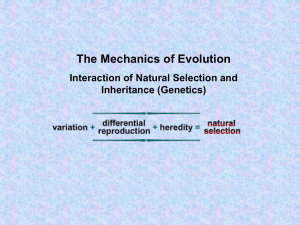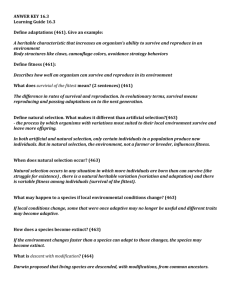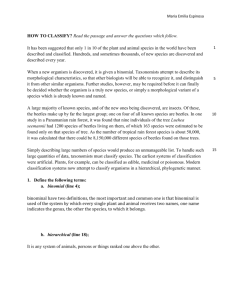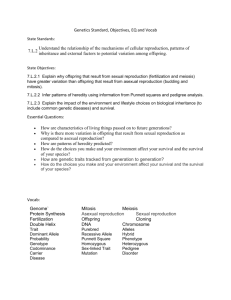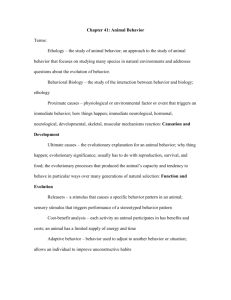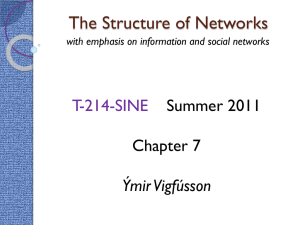Evolution by Natural Selection: Darwin's Theory Explained
advertisement
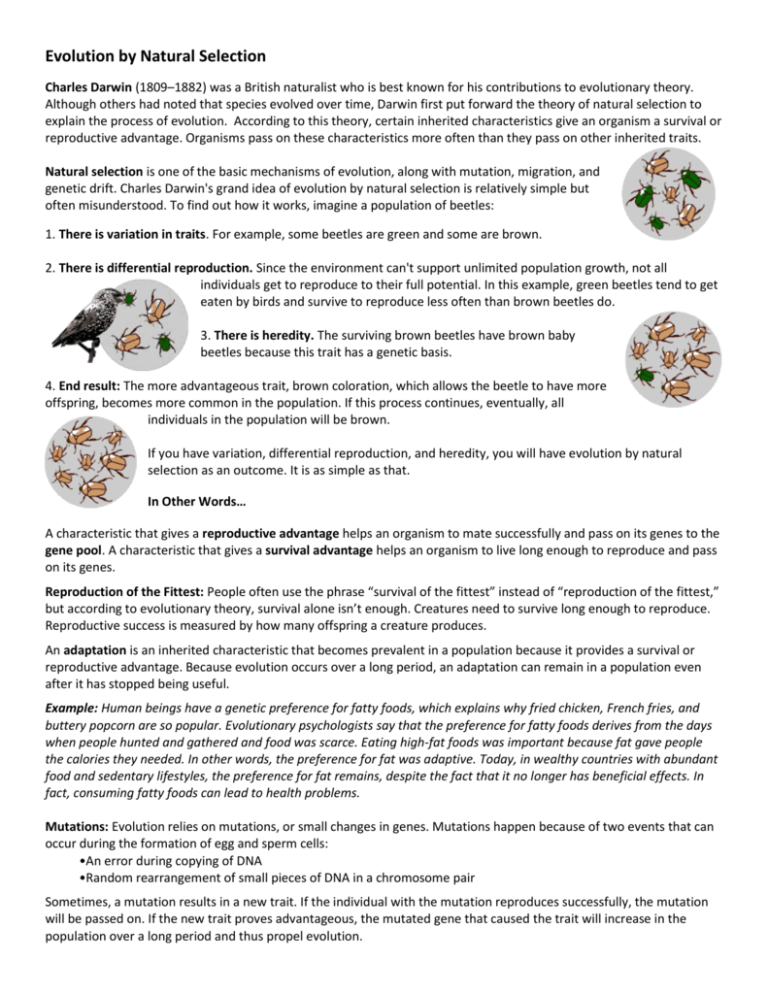
Evolution by Natural Selection Charles Darwin (1809–1882) was a British naturalist who is best known for his contributions to evolutionary theory. Although others had noted that species evolved over time, Darwin first put forward the theory of natural selection to explain the process of evolution. According to this theory, certain inherited characteristics give an organism a survival or reproductive advantage. Organisms pass on these characteristics more often than they pass on other inherited traits. Natural selection is one of the basic mechanisms of evolution, along with mutation, migration, and genetic drift. Charles Darwin's grand idea of evolution by natural selection is relatively simple but often misunderstood. To find out how it works, imagine a population of beetles: 1. There is variation in traits. For example, some beetles are green and some are brown. 2. There is differential reproduction. Since the environment can't support unlimited population growth, not all individuals get to reproduce to their full potential. In this example, green beetles tend to get eaten by birds and survive to reproduce less often than brown beetles do. 3. There is heredity. The surviving brown beetles have brown baby beetles because this trait has a genetic basis. 4. End result: The more advantageous trait, brown coloration, which allows the beetle to have more offspring, becomes more common in the population. If this process continues, eventually, all individuals in the population will be brown. If you have variation, differential reproduction, and heredity, you will have evolution by natural selection as an outcome. It is as simple as that. In Other Words… A characteristic that gives a reproductive advantage helps an organism to mate successfully and pass on its genes to the gene pool. A characteristic that gives a survival advantage helps an organism to live long enough to reproduce and pass on its genes. Reproduction of the Fittest: People often use the phrase “survival of the fittest” instead of “reproduction of the fittest,” but according to evolutionary theory, survival alone isn’t enough. Creatures need to survive long enough to reproduce. Reproductive success is measured by how many offspring a creature produces. An adaptation is an inherited characteristic that becomes prevalent in a population because it provides a survival or reproductive advantage. Because evolution occurs over a long period, an adaptation can remain in a population even after it has stopped being useful. Example: Human beings have a genetic preference for fatty foods, which explains why fried chicken, French fries, and buttery popcorn are so popular. Evolutionary psychologists say that the preference for fatty foods derives from the days when people hunted and gathered and food was scarce. Eating high-fat foods was important because fat gave people the calories they needed. In other words, the preference for fat was adaptive. Today, in wealthy countries with abundant food and sedentary lifestyles, the preference for fat remains, despite the fact that it no longer has beneficial effects. In fact, consuming fatty foods can lead to health problems. Mutations: Evolution relies on mutations, or small changes in genes. Mutations happen because of two events that can occur during the formation of egg and sperm cells: •An error during copying of DNA •Random rearrangement of small pieces of DNA in a chromosome pair Sometimes, a mutation results in a new trait. If the individual with the mutation reproduces successfully, the mutation will be passed on. If the new trait proves advantageous, the mutated gene that caused the trait will increase in the population over a long period and thus propel evolution. What about fitness? Biologists use the word fitness to describe how good a particular genotype is at leaving offspring in the next generation relative to how good other genotypes are at it. So if brown beetles consistently leave more offspring than green beetles because of their color, you'd say that the brown beetles had a higher fitness. The brown beetles (left) have a greater fitness relative to the green beetles (right). Of course, fitness is a relative thing. A genotype's fitness depends on the environment in which the organism lives. The fittest genotype during an ice age, for example, is probably not the fittest genotype once the ice age is over. Fitness is a handy concept because it lumps everything that matters to natural selection (survival, mate-finding, reproduction) into one idea. The fittest individual is not necessarily the strongest, fastest, or biggest. A genotype's fitness includes its ability to survive, find a mate, produce offspring — and ultimately leave its genes in the next generation. Caring for your offspring (pictured left), and producing thousands of young — many of whom won't survive (pictured right), and sporting fancy feathers that attract females (below left) are a burden to the health and survival of the parent. These strategies do, however, increase fitness because they help the parents get more of their offspring into the next generation. It might be tempting to think of natural selection acting exclusively on survival ability — but, as the concept of fitness shows, that's only half the story. When natural selection acts on matefinding and reproductive behavior, biologists call it sexual selection. Sexual selection Sexual selection is a "special case" of natural selection. Sexual selection acts on an organism's ability to obtain (often by any means necessary!) or successfully copulate with a mate. Selection makes many organisms go to extreme lengths for sex: peacocks (top left) maintain elaborate tails, elephant seals (top right) fight over territories, fruit flies perform dances, and some species deliver persuasive gifts. After all, what female Mormon cricket (bottom right) could resist the gift of a juicy sperm-packet? Going to even more extreme lengths, the male redback spider (bottom left) literally flings itself into the jaws of death in order to mate successfully. Sexual selection is often powerful enough to produce features that are harmful to the individual's survival. For example, extravagant and colorful tail feathers or fins are likely to attract predators as well as interested members of the opposite sex.

